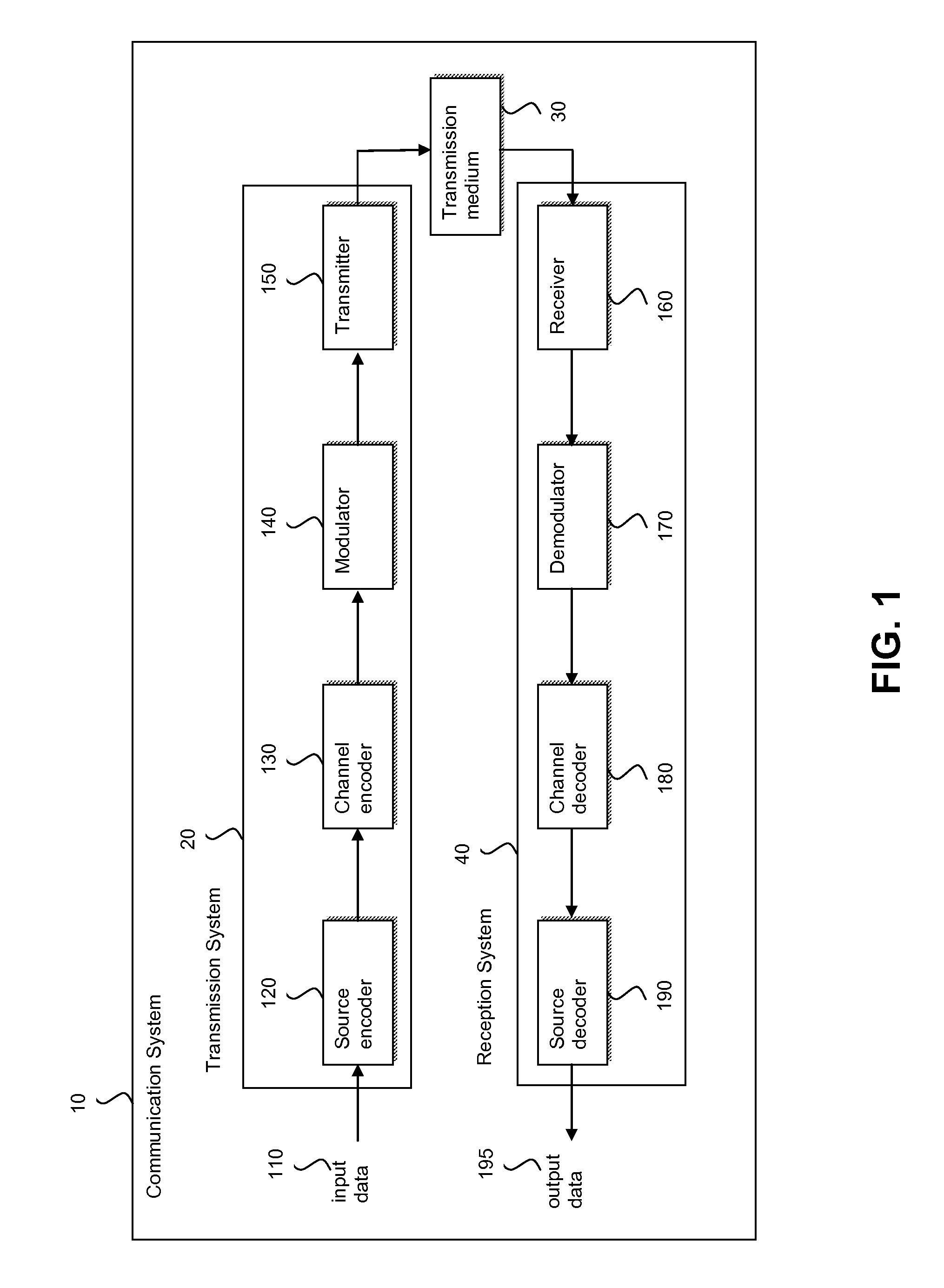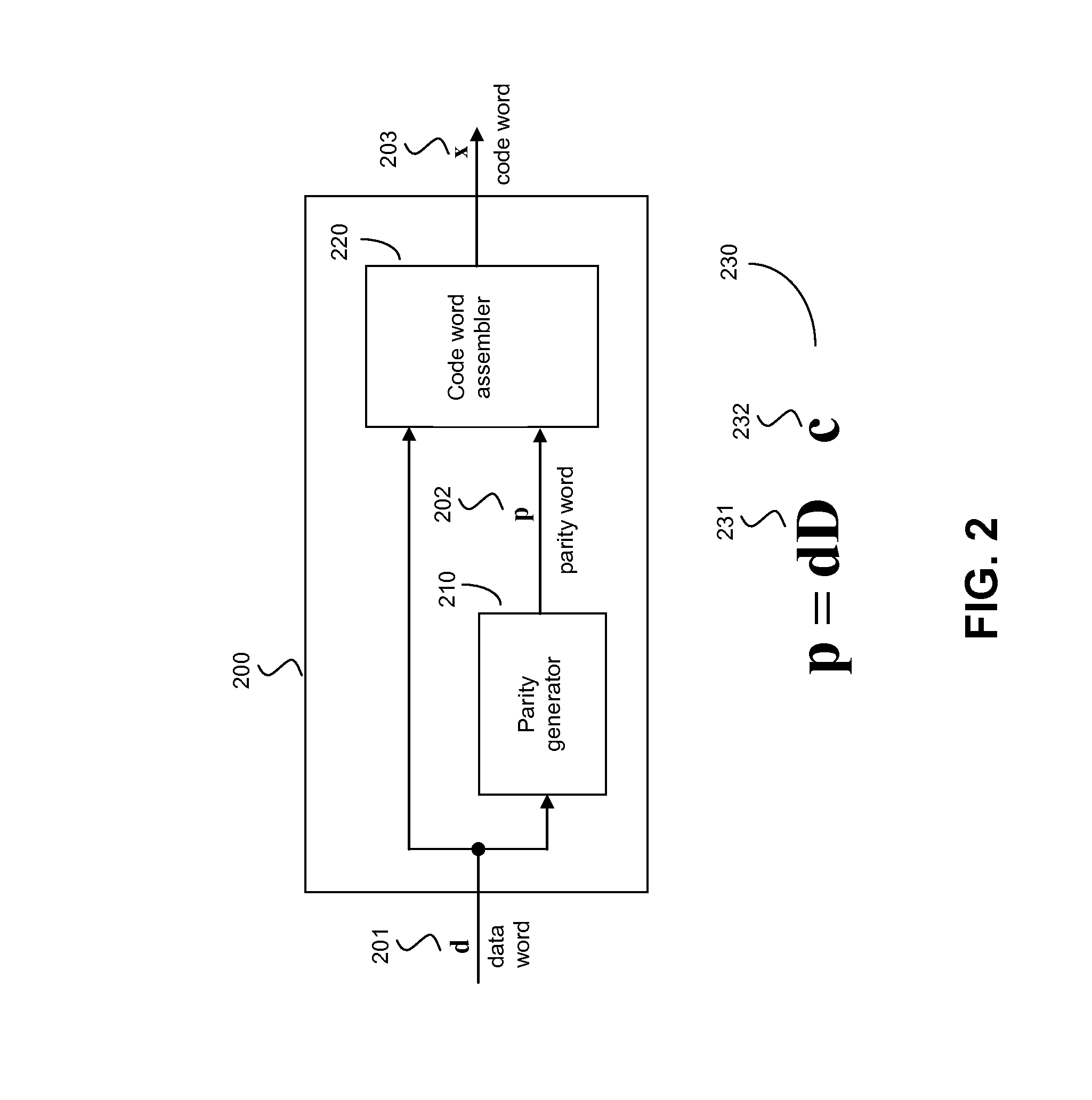Method and system for error correction in transmitting data using low complexity systematic encoder
a systematic encoder and low-complexity technology, applied in the field of error correction, can solve the problems of unacceptably high encoder complexity, inability to transform a non-systematic polar code into a systematic polar code, and low practical use of high-complexity encoder schemes. achieve the effect of improving the bit-error rate performan
- Summary
- Abstract
- Description
- Claims
- Application Information
AI Technical Summary
Benefits of technology
Problems solved by technology
Method used
Image
Examples
Embodiment Construction
[0027]In accordance with established conventions in coding theory, data words, parity words, and code words in the system are represented herein as vectors over a finite field Fq where q denotes the number of elements in the field. Field elements (scalars) are denoted by plain tower case letters, such as a∈Fq. Vectors over a field are denoted by lower-case boldface letters, such as a∈FqN where N denotes the length of the vector. The notation ai denotes the ith coordinate of a vector a. A vector a∈FqN is alternatively denoted in terms of its elements as (a1, . . . , aN) or (ai:1≦i≦N). Matrices over a field are denoted by upper-case boldface letters, such as A∈F qM×N where M denotes the number of rows and N denotes the number of columns of A. The notation ai,j denotes the element in the ith row and jth column of A. A matrix A∈FqM×N is denoted in terms of its elements as (ai,j:1≦i≦M,1≦j≦N). The size of a matrix A is defined as the number of elements in A; thus, the size of a matrix wit...
PUM
 Login to View More
Login to View More Abstract
Description
Claims
Application Information
 Login to View More
Login to View More - R&D
- Intellectual Property
- Life Sciences
- Materials
- Tech Scout
- Unparalleled Data Quality
- Higher Quality Content
- 60% Fewer Hallucinations
Browse by: Latest US Patents, China's latest patents, Technical Efficacy Thesaurus, Application Domain, Technology Topic, Popular Technical Reports.
© 2025 PatSnap. All rights reserved.Legal|Privacy policy|Modern Slavery Act Transparency Statement|Sitemap|About US| Contact US: help@patsnap.com



